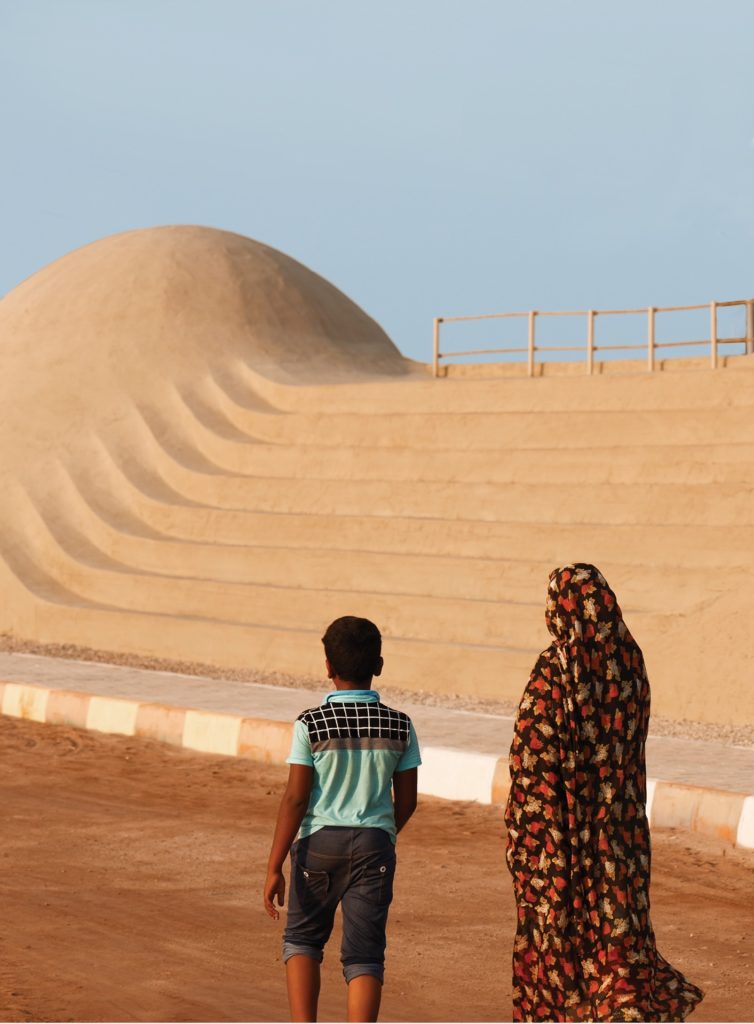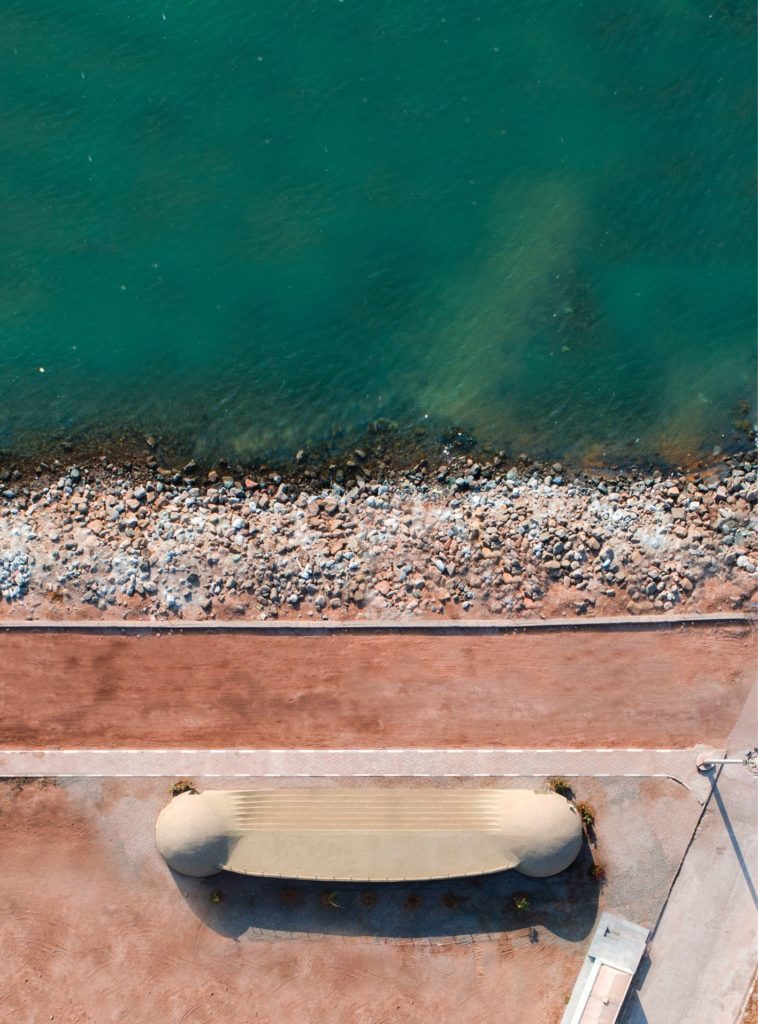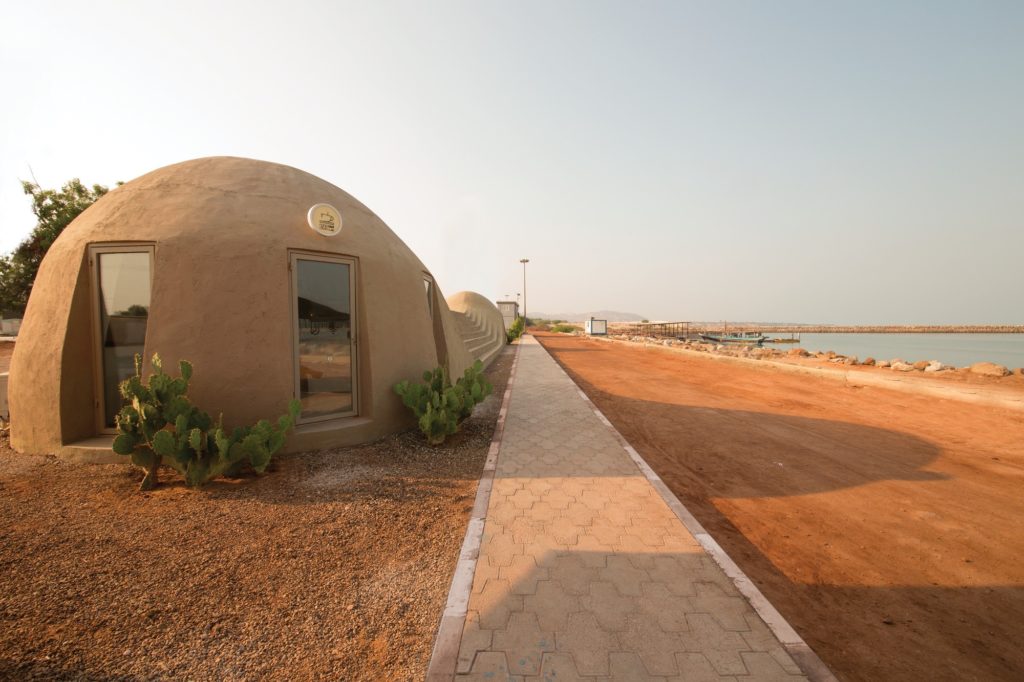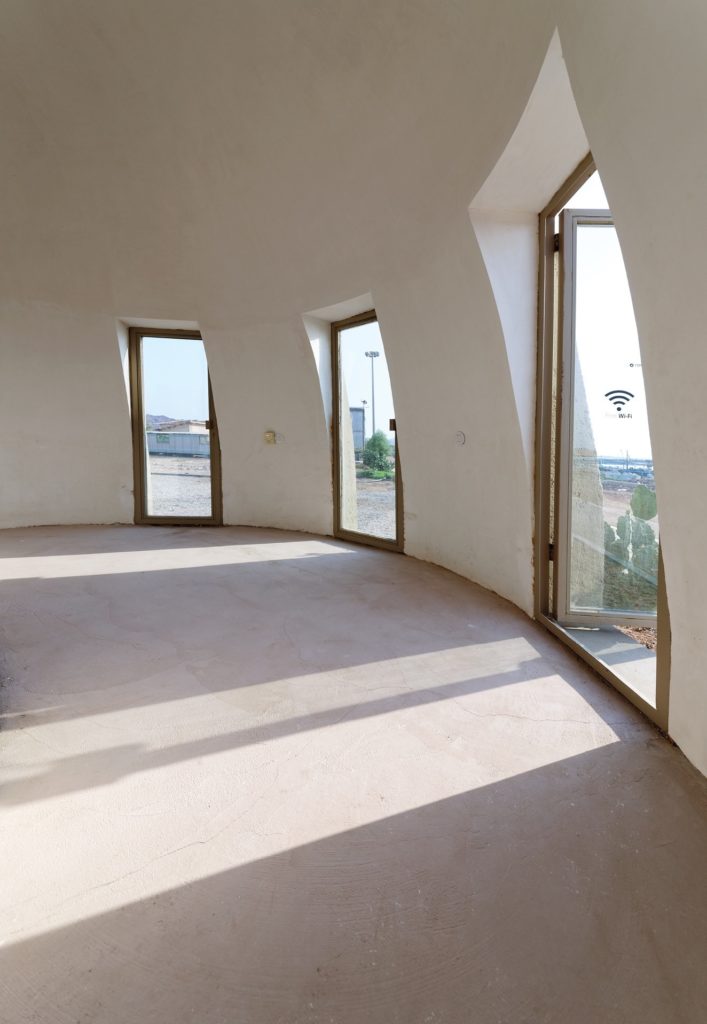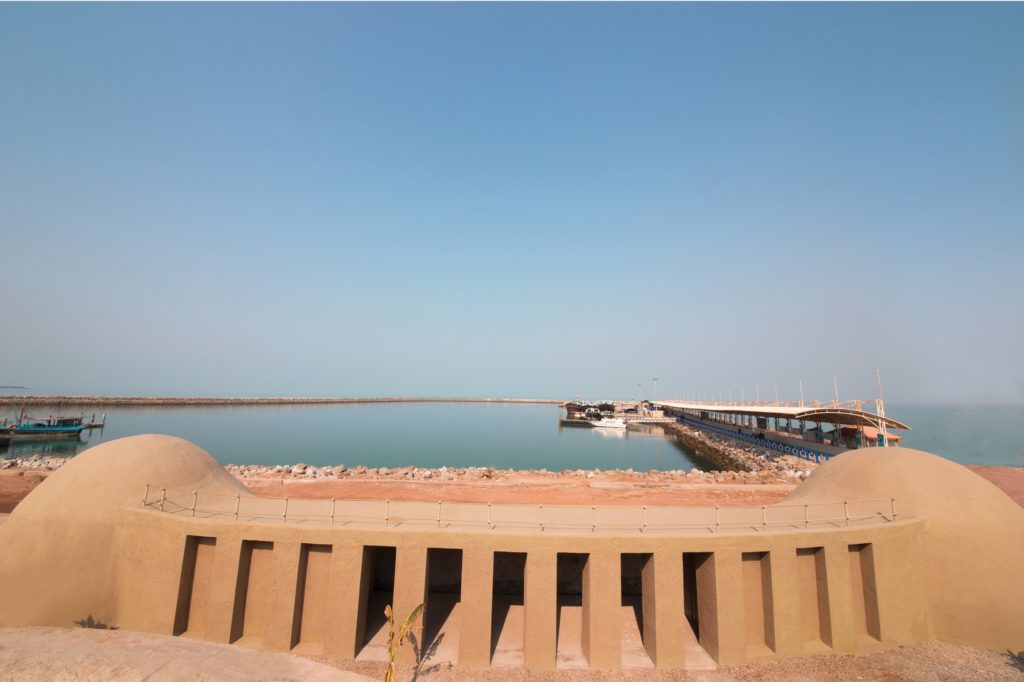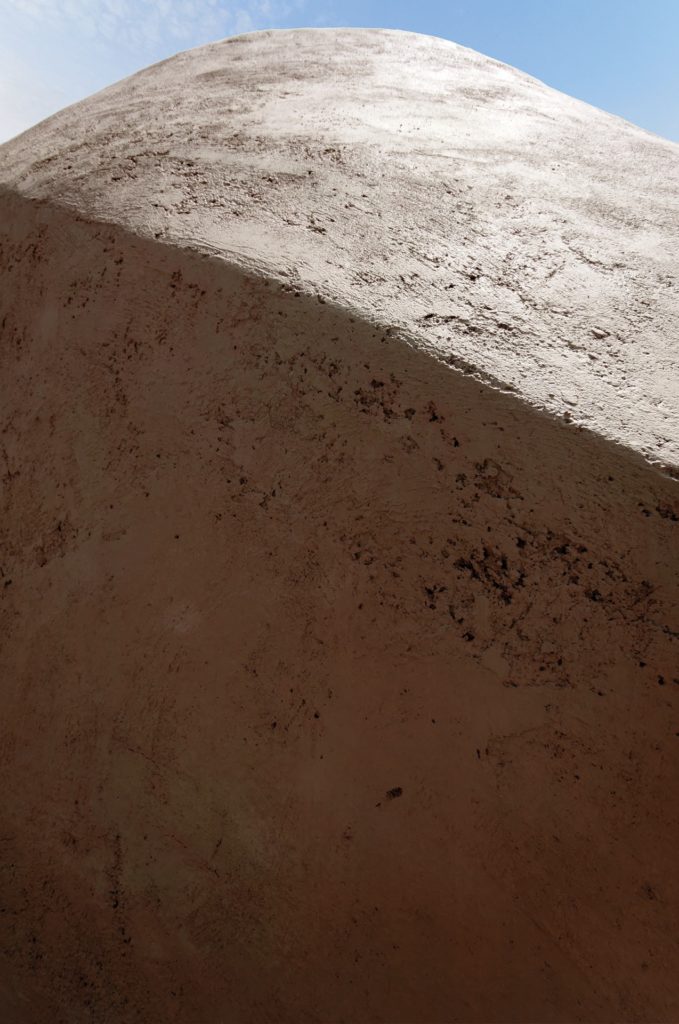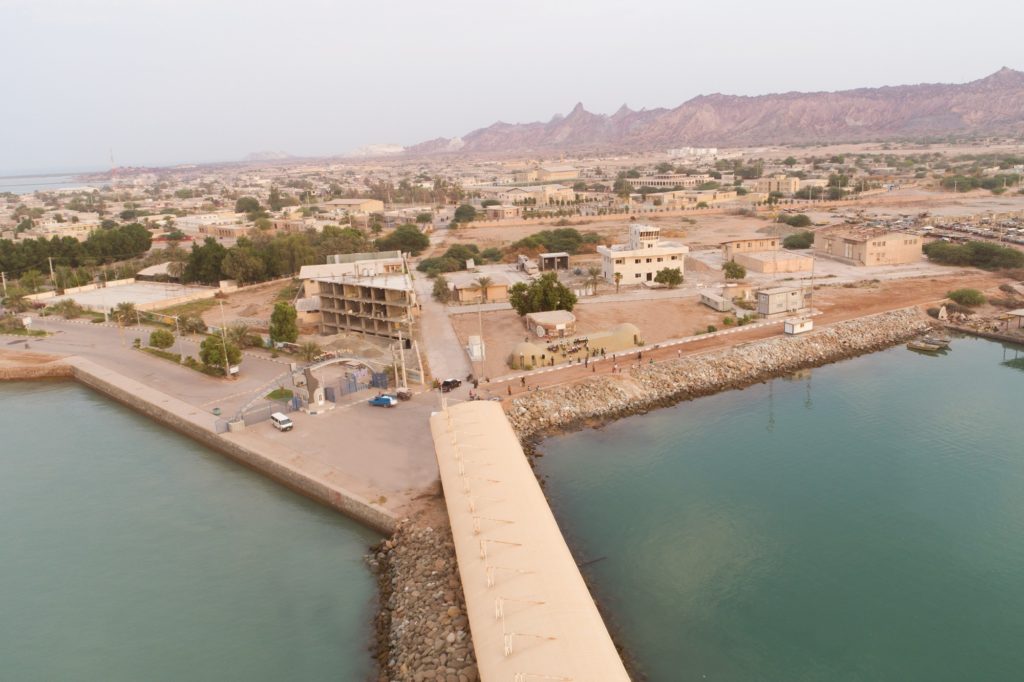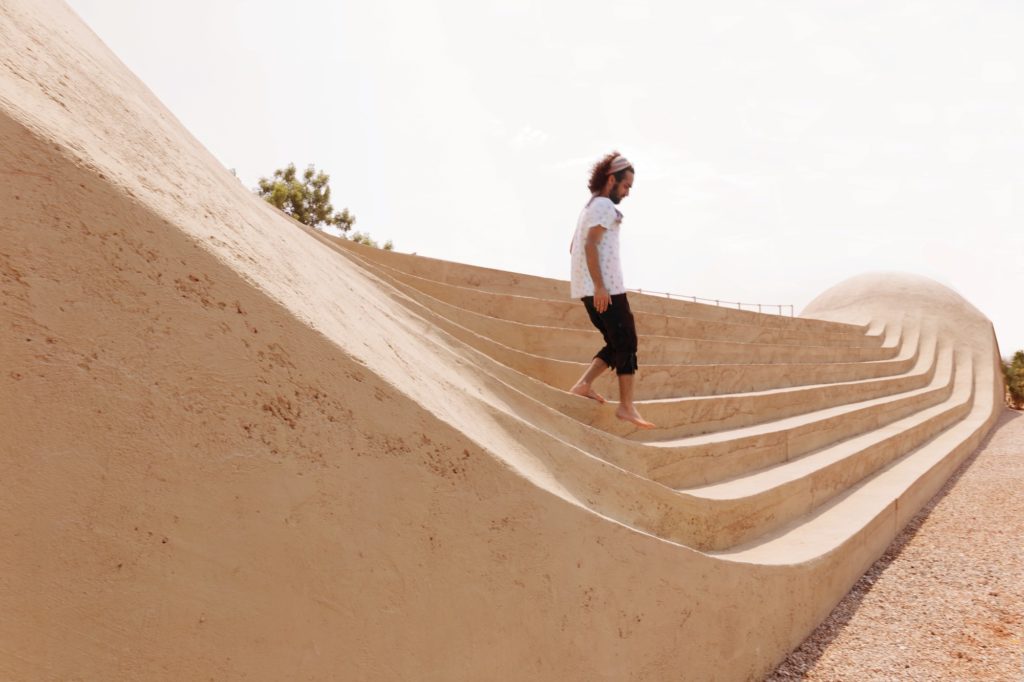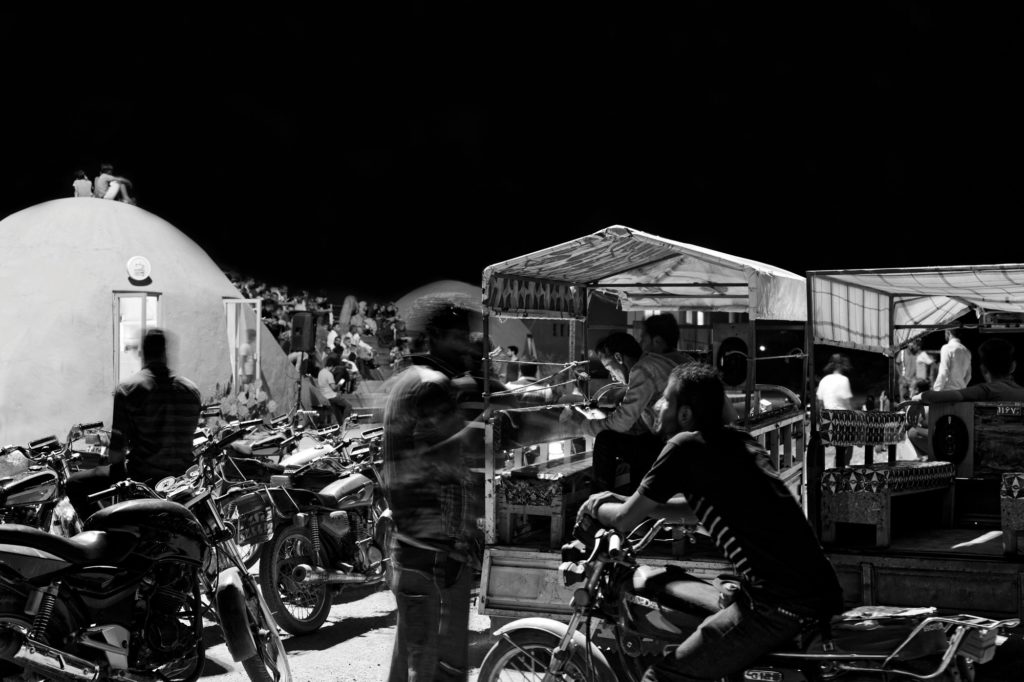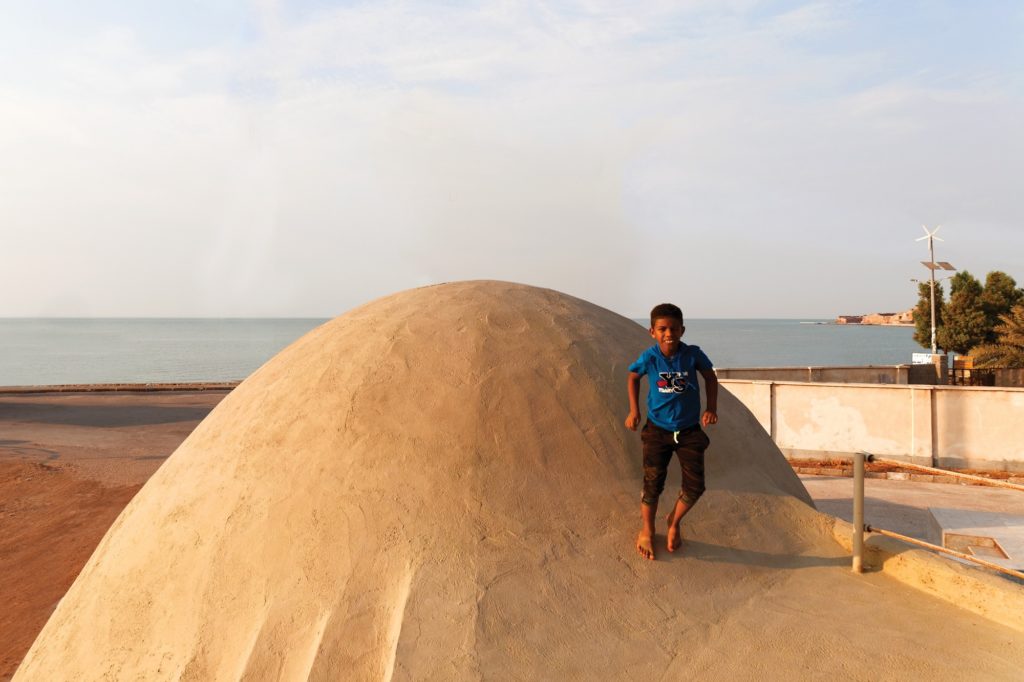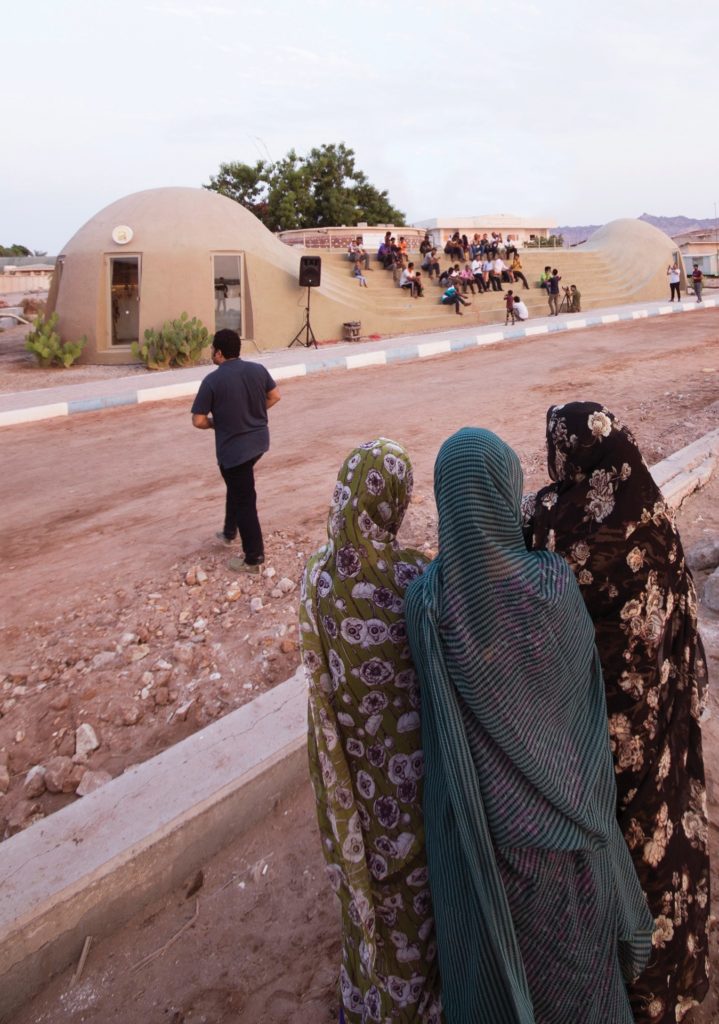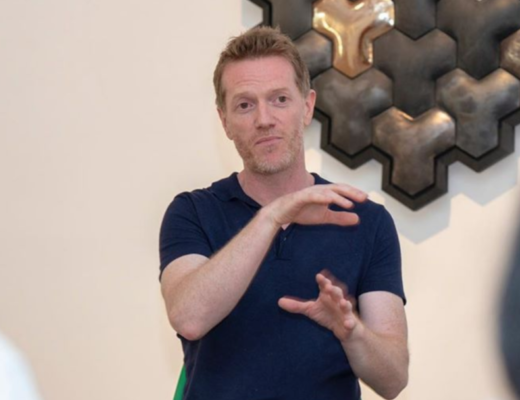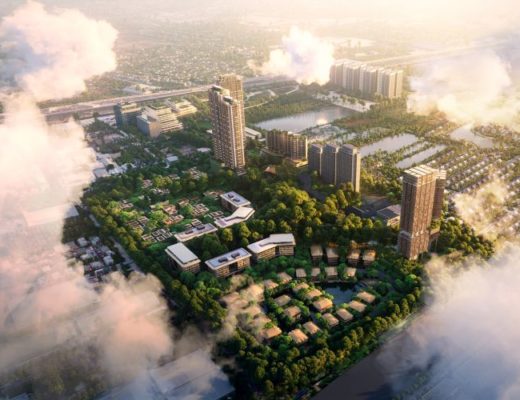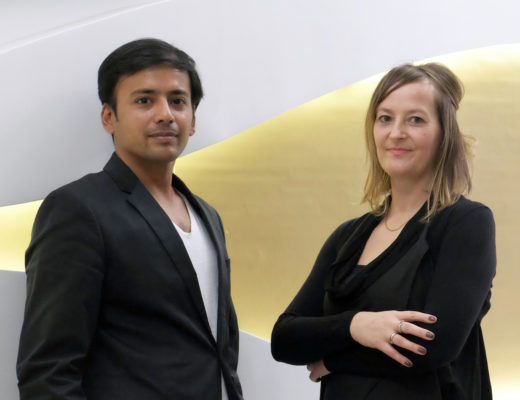One of Iran’s best-known practices Zav Architects has designed a community centre on the island of Hormuz, located in the Straits of Hormoz in the Persian Gulf.
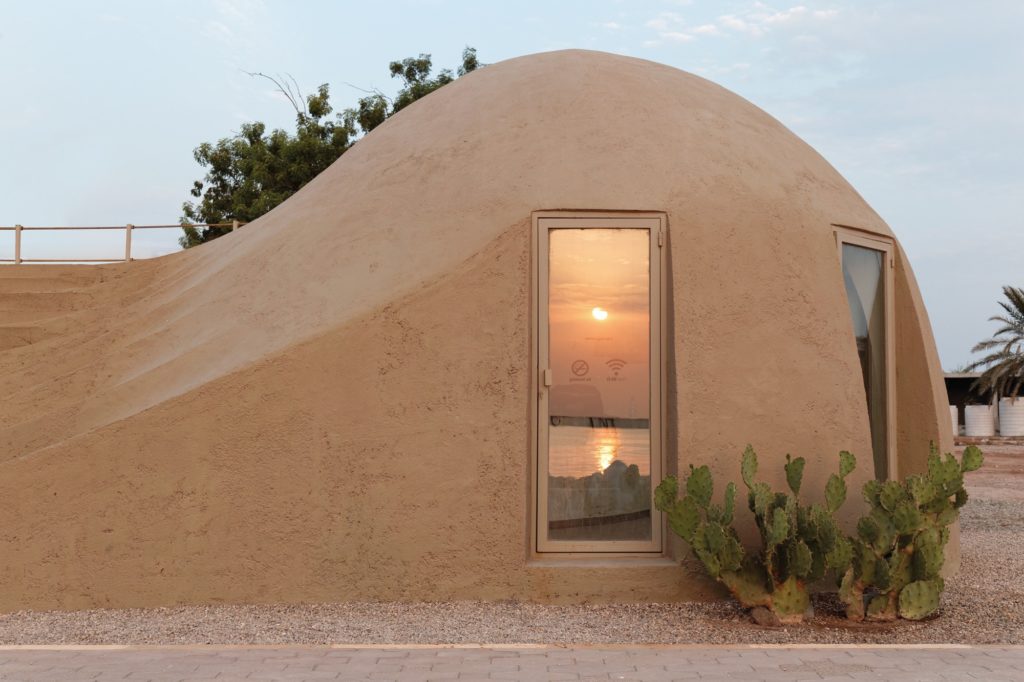
The island of Hormuz has been economically challenged and has a history of consecutive failures when it comes to environmental issues. “Hormoz Red Soil” has long been a matter of tension and the matter has been and still is perceived by many locals as the plundering of their island’s natural resources. The client originally started the project in 2014, but it didn’t get local cooperation, leading the client to think of a more Afterwards he decided to have a more calculated presence in Hormoz.
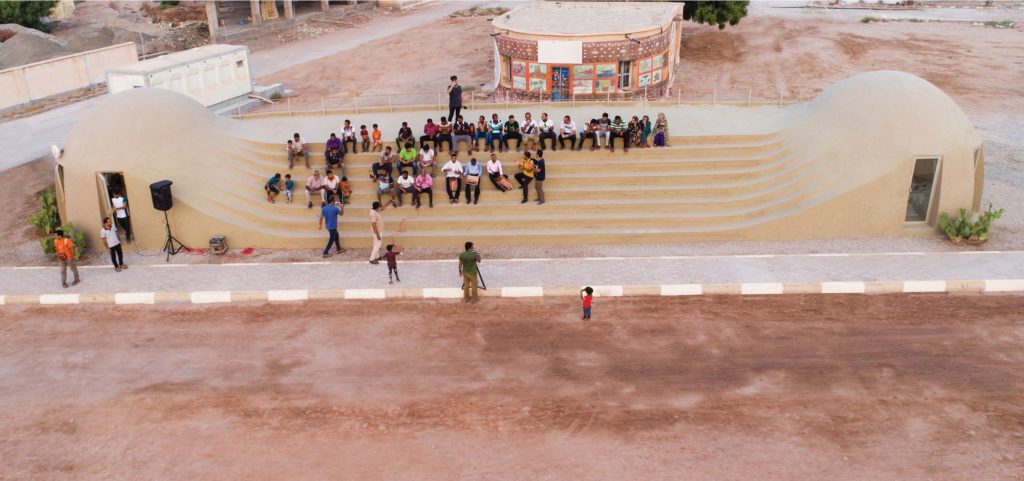
Due to limitations of resources, a participative process was set up. Then multi-disciplinary brainstorming workshops were held and “Presence in Hormoz” as an overarching vision was further developed in accordance with a set of strategies and tactics of an intervention plan. The first series of the project that was planned to be executed based on environmental, self-sufficiency, and simple implementation features would target a sort of Hormoz-oriented tourism infrastructure: A community centre, a tourist information centre, a passenger station, a series of bicycle rental stations, cafes and restaurants, a waste recycling management centre, a variety of tourist accommodation centres, multiple urban public spaces. First, a community center was set up temporarily to gain the participation of Hormozians.

Afterward, a cultural centre containing: tourist information, café, and event management centre were planned to be built. “Rong” was the name that the design team chose for this complex. Rong is an urban space that people can walk on. It has harmony with the island’s geomorphology and is iconic at the same time. Its presence in Hormoz brings pride for Hormozians. In its implementation, the adopted sandbag technology was combined with steel structure covered with cement.
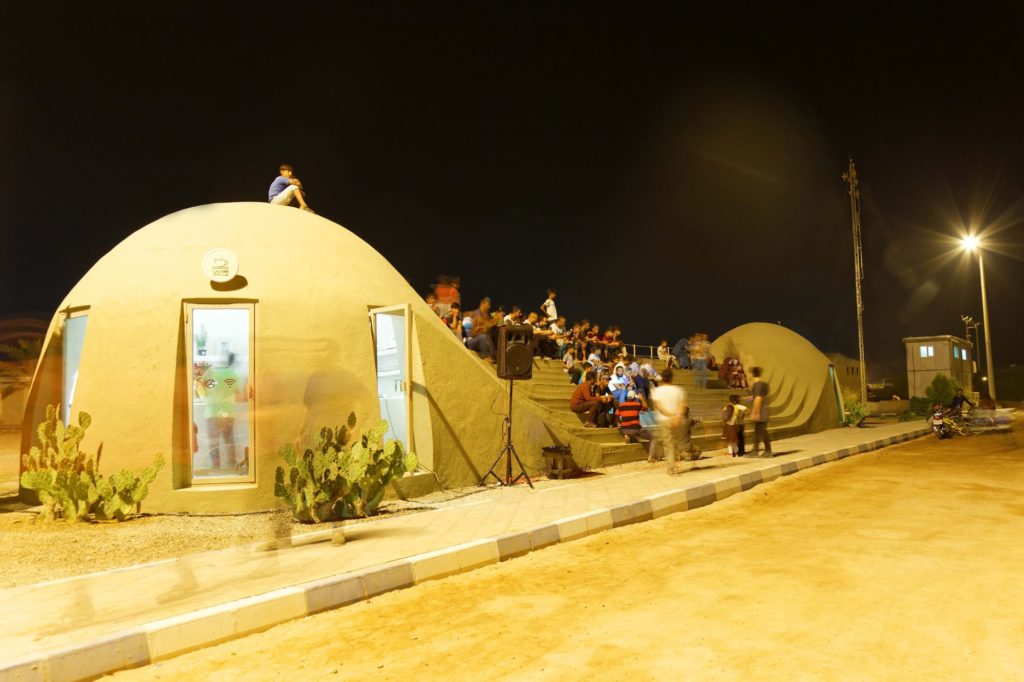
Rong is an interactive space that encourages people’s participation. It is sustainable and recyclable and, it is built fast and with ease, and as such, it can be replicated time and again.
The project seeks to ask questions such as “Can architecture bring back its past booming era to the poor city of Hormoz and draw a more hopeful future for Hormozians? Can architecture save us from an unnecessary conflict? Can architecture function as an active agent in an environmental issue by protecting limited soil resources from unfair plunder and save it for the next generation?
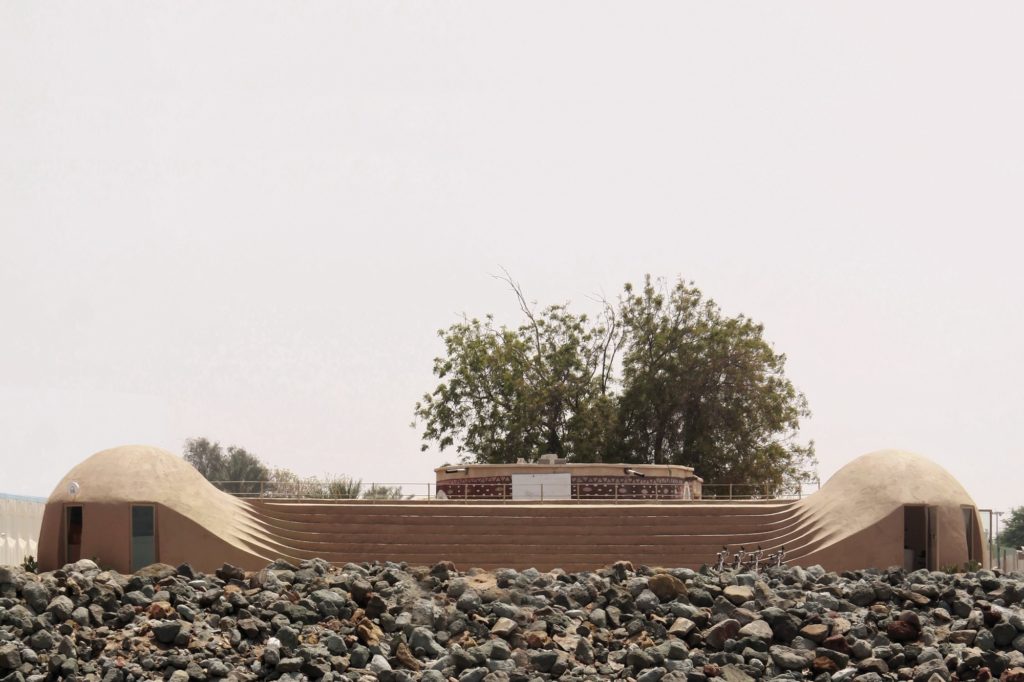
The design team looked to the late pioneer Iranian architect Nader Khalili for inspiration while creating an adobe structure that is capable of providing contemporary urban solutions. “Can a public topographic space be built based on natural geo-contours and out of local ego-particles?”; “Can we secure our intervention steps by testing techniques prior to the field?”; “Does a building need to be ‘tall’ to change the skyline?” – such questions formed the basis of this project that aims to intervene in a public space while keeping the intervention almost invisible and as if the facility has always been a part of the landscape.
See the full image gallery here:
You might also like:
15 Contemporary Mosques Around The World That Redefine Sacral Architecture With Respect
H&P Architects designs a house in Hanoi with bricks and vernacular construction methods



